Taste the Sunshine: A Farmers Market Guide to Stone Fruit
June 12, 2025
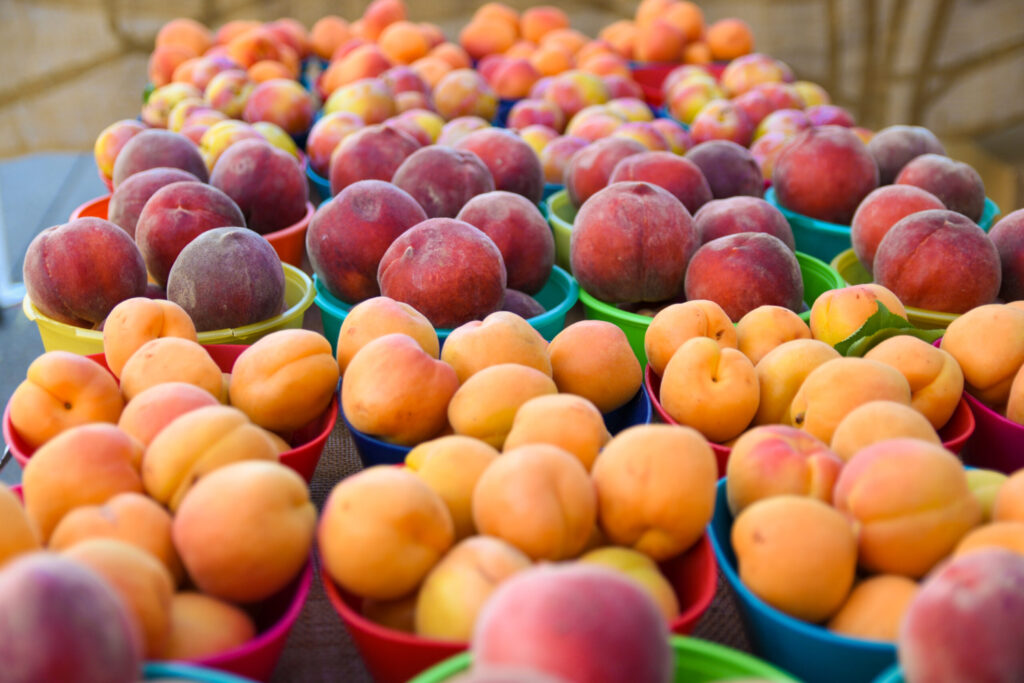
While San Francisco summers can be mild and foggy, stone fruit brings a ray of sweet sunshine to the summer farmers market, in a rainbow of colors and flavors.
Between a freshly harvested farmers market peach and a common grocery store peach, you’ll find a world of difference. In the grocery store distribution system, fruit is often picked early, before the sugars are able to fully develop, in order to withstand long-distance shipping and retail storage. This results in mealy peaches that lack flavor. In contrast, farmers market peaches are picked shortly before market, making them more perishable but also perfectly ripe, juicy, and ready to eat.
Cherries, apricots, peaches, and plums are commonly known as “stone fruit,” referring to the hard pits that cover their seeds. Stone fruits can be split into two types: freestone and clingstone. Freestones have flesh that can be easily separated from the seeds, while clingstone fruits are messier but often juicier and more flavorful. (Almonds are also included, though it’s the seed rather than the flesh that we eat.)

Apriums, pluots, and other hybrid varieties are created through cross-breeding species of Prunus. These natural hybrids are the result of carefully controlled crosses by plant breeders. The breeder collects pollen from one variety with desirable traits and applies it to the blossoms of another variety. If the cross is fruitful, the breeder keeps the seeds and plants them.
We’ve put together a brief guide to some of the many varieties you’ll find at the farmers market in spring, summer, and fall. Since most stone fruit varieties have a brief harvest window, each week brings new surprises, with favorites like Rainier cherries, O’Henry peaches, and Flavor Grenade pluots making cameos. Stop by the orange Seasonal Spotlight tent this month at Foodwise farmers markets for samples, recipes, and cooking tips on creative ways to enjoy sweet stone fruit.
Find Stone Fruit at These Farms at Foodwise Farmers Markets
Arata Farms | Balakian Farms | Blossom Bluff Orchards | Everything Under the Sun | Frog Hollow Farm | K&J Orchards | Kashiwase Farms | Knoll Farms | Lagier Ranches | Rojas Family Farms | The Peach Farm | Tory Farms | Twin Girls Farm | Winters Fruit Tree
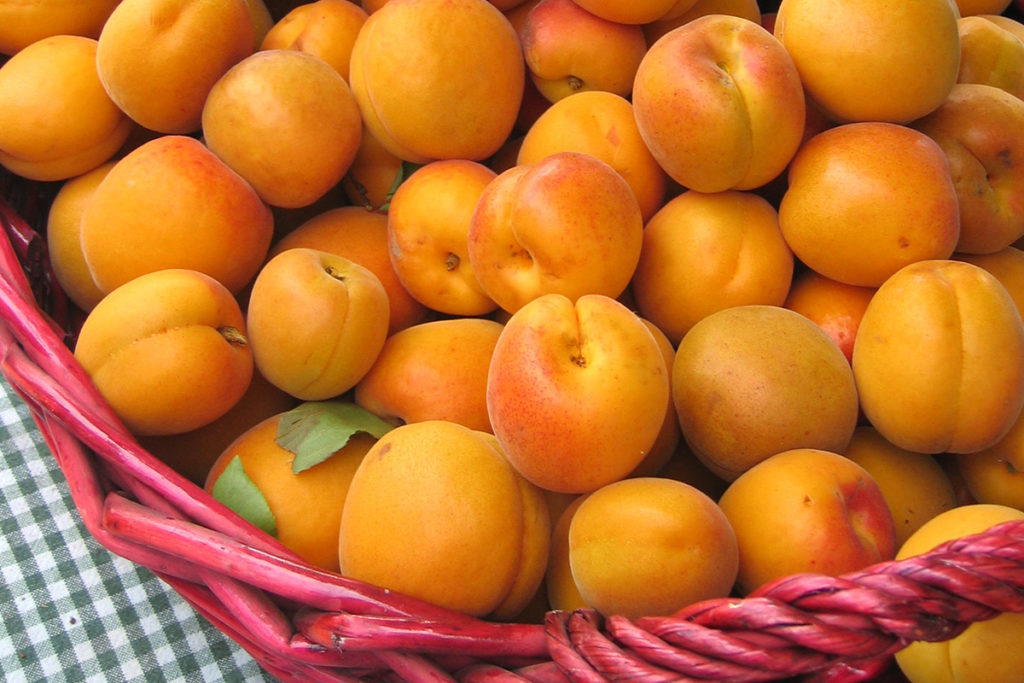
With their gold-orange velvety skin, these dense-fleshed flavor bombs are a late spring/early summer delicacy. Their easy-to-remove pit makes for easy snacking. One of the most sought-after local apricots, the Royal Blenheim, was introduced to California in the 1880s, and by the 1920s the variety dominated a thriving dried apricot industry, blanketing the Santa Clara Valley. Most of the original Blenheim orchards have been paved over, but a few farmers, such as Bill Crepps of Everything Under the Sun, still grow the intensely flavorful variety, available in limited supply from May to July.
Recipe to try: Labneh Cheesecake with Roasted Apricots, Honey, and Cardamom by Sami Tamimi and Tara Wigley, Falastin
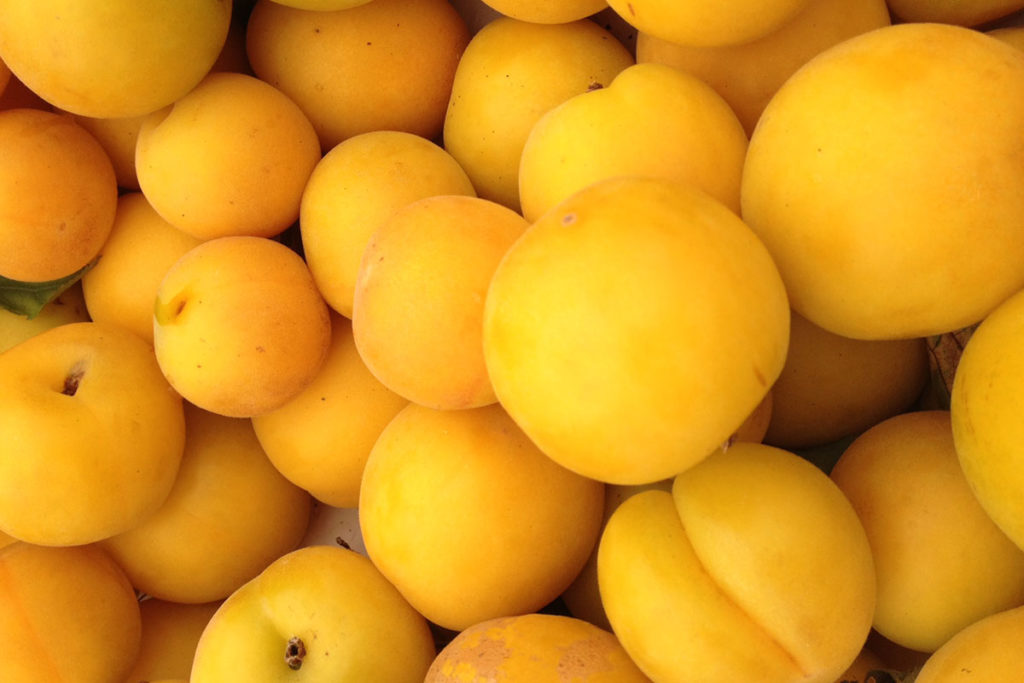
Developed by a plant geneticist named Floyd Zaiger, the aprium is a hybrid fruit whose heritage is about 75% apricot and 25% plum. In appearance, it resembles an apricot with its orange skin and flesh and slight fuzziness. In flavor, the aprium is very sweet (due to its higher sugar content) with a hint of plum. Substitute apriums for stone fruit in salads, pies, tarts and crisps, or enjoy them in their natural state. Look for them in May and June, and choose firm fruit that gives slightly under light pressure.
Recipe to try: Summer Blueberry and Stone Fruit Crostini by Amanda Cihlar, Sierra Cascade Blueberry Farm
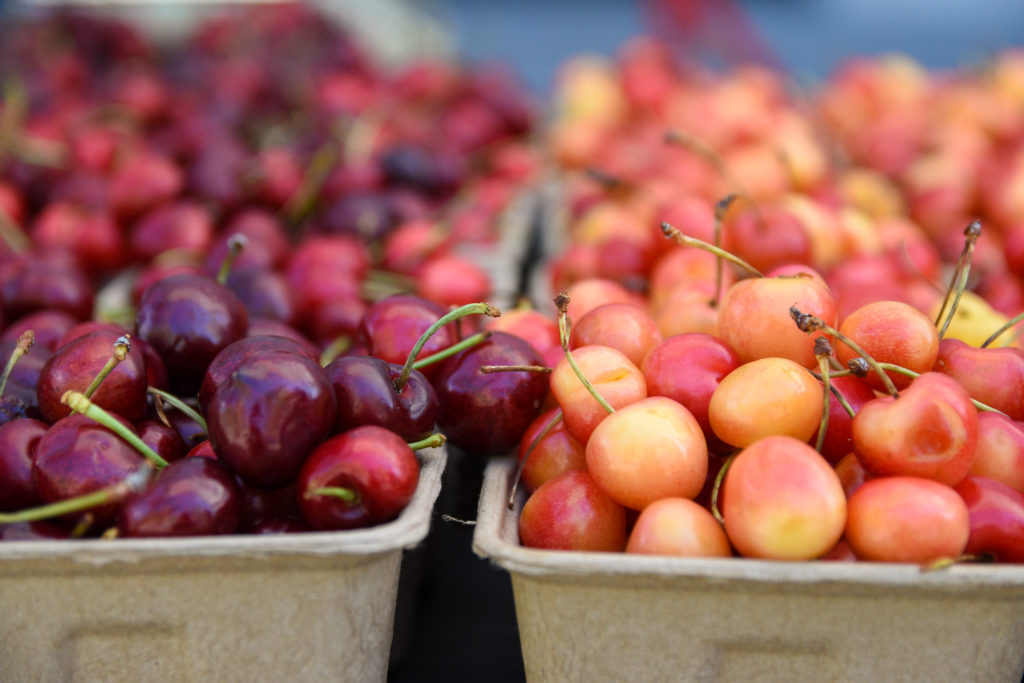
The earliest of the stone fruit, cherries demand prompt and quick consumption, with their relatively brief season between April and July. There exists an array of flavors of colors, from lushly sweet to pleasantly tart, and from rich crimson (Bing, Brooks, Tulare) to blushing sunshine (Rainier). When shopping for cherries, seek out firm, plump fruit with unblemished skin and the stem intact. Cherries are highly perishable and will not ripen once picked, so eat them as soon as possible to get the best flavor.
Recipe to try: Sautéed Swiss Chard with Dried Cherries by Nigel Jones, Kingston 11
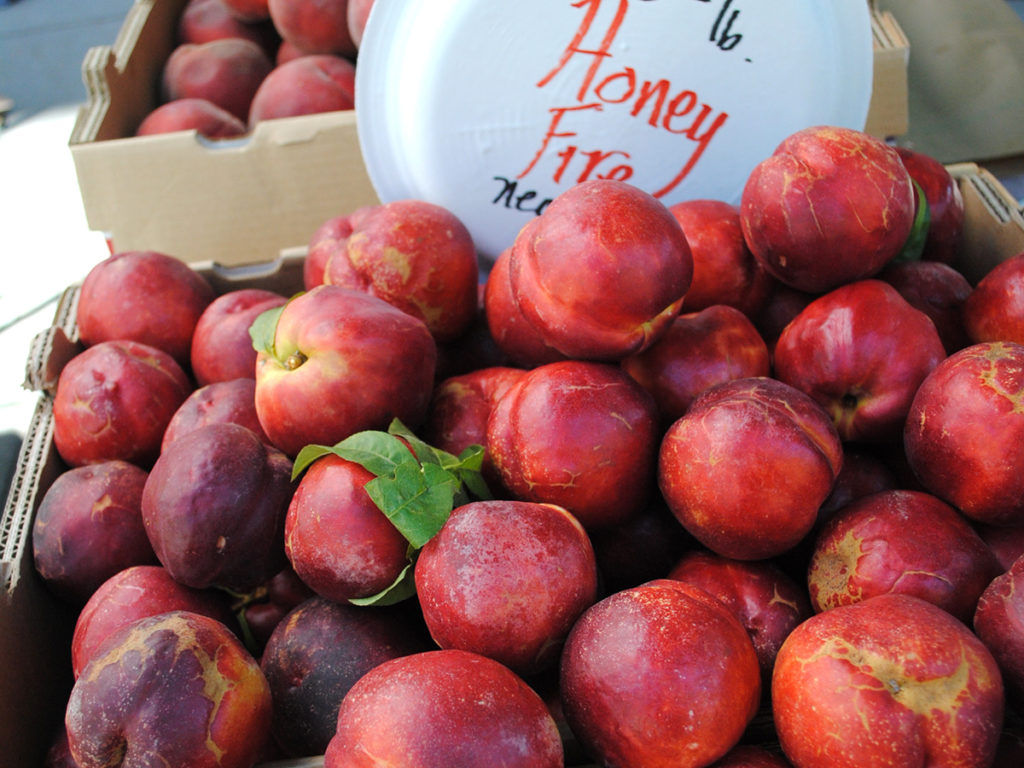
Nectarines are actually cultivars of peaches. They are of the same species, but due to a recessive gene, they do not develop the characteristic fuzz (a protection against insects) of a peach, and instead have a smooth skin. The mutation also leads to a firmer, spicier tasting flesh. Like peaches, nectarines can be either freestone or clingstone, depending on how embedded the pit is within the flesh. Many Ferry Plaza farmers offer nectarines from May to September.
Recipe to try: White Nectarine and Burrata with Guanciale Chip Crostini by Carl Foronda, 1760
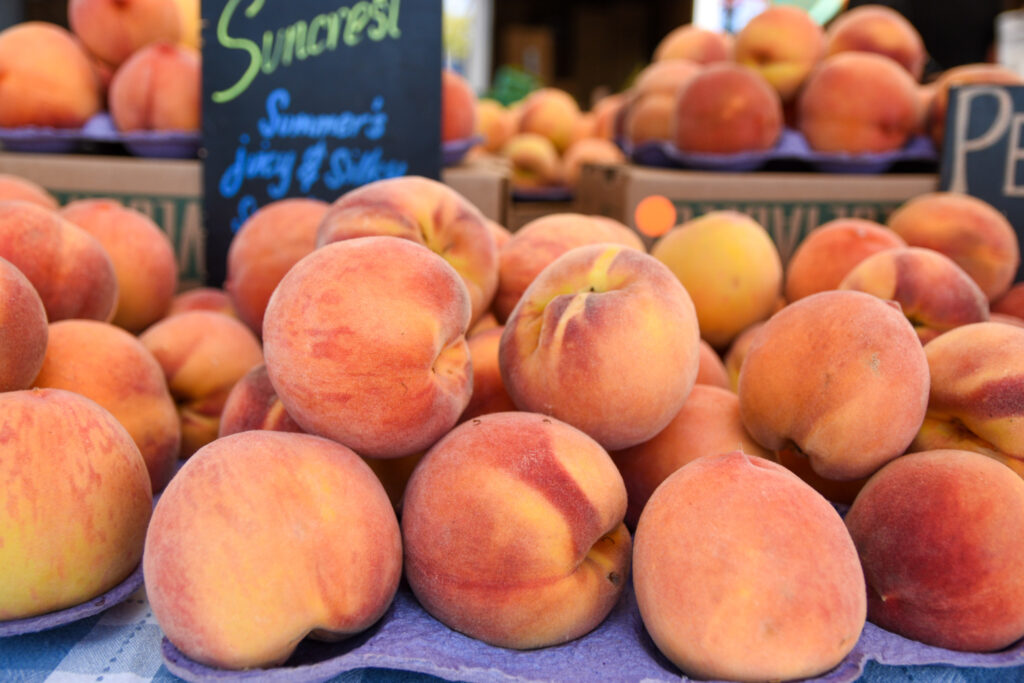
At the height of summer, peaches have an intoxicating aroma and an almost too-good-to-be-real flavor—it’s no wonder some peach fans make the trip to the farmers market just for them. Thousands of varieties exist, and each one has its own personality. (For example, the Cal Red and O’Henry are especially sought-after varieties at Frog Hollow Farm.) Some people prefer the pure, low-acid sugariness of a white peach, while others live for the tart/sweet flavor of a classic yellow peach. The sweetness of a peach also depends on how ripe it was when harvested. A peach will get juicier and softer as it ripens on a kitchen counter, but it will have only the amount of sugar it started with when it was picked. What changes is the chemistry; the acid content decreases as the fruit ripens, and so the fruit tastes sweeter. These classic fruits reach peak season between May and September.
Recipe to try: Summer Peach “Burrata” Caprese with Harissa by Linda Shiue MD, Spicebox Kitchen
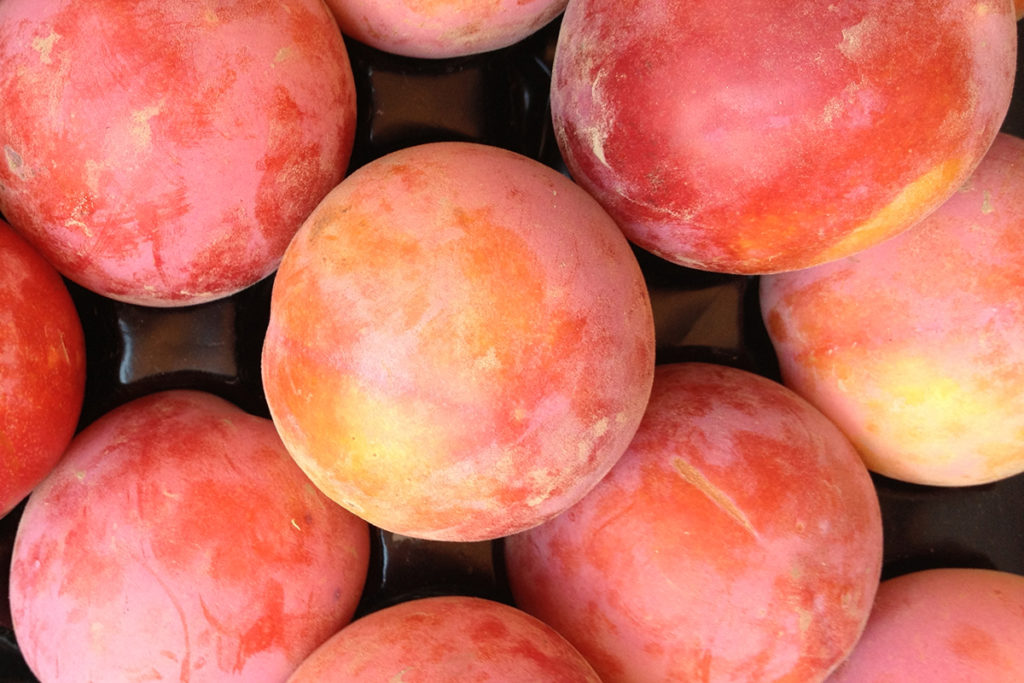
Why choose between a peach, an apricot, or a plum when you can have all three? At their ripest, peacotums have tart skin and sweet flesh that carries strong notes of plum and apricot. Another product of Zaiger’s Genetics, these hybrid fruits were created in Modesto and come in several varieties, including Bella Ceries, Bella Royale, and Velvet Sunrise. All varieties share the same slightly fuzzy skin and bright red blush. Find them at orchards like Blossom Bluff Orchards between July and August.
Recipe to try: Stone Fruit Panzanella by John Madriaga, Spruce

Over 2,000 varieties of plums exist, each with a diverse set of shapes and colors, and they are divided into the following six categories: Japanese, American, Ornamental, Damson, Wild, and European. Japanese plums are the most familiar and widely sold fresh-eating plum, typically round or heart-shaped with a dark red or peachy-yellow flesh. Elephant Heart, Emerald Beaut, and Santa Rosa are just a few popular varieties. The natural whitish coating on many plums (and other plants) is epicuticular wax, or “bloom,” and it serves as a water repellent and protection against moisture loss and UV light. Pick up plums at the farmers market between May and November.
Recipe to try: Mexican-Inspired Galette by Raquel Goldman, Norte 54
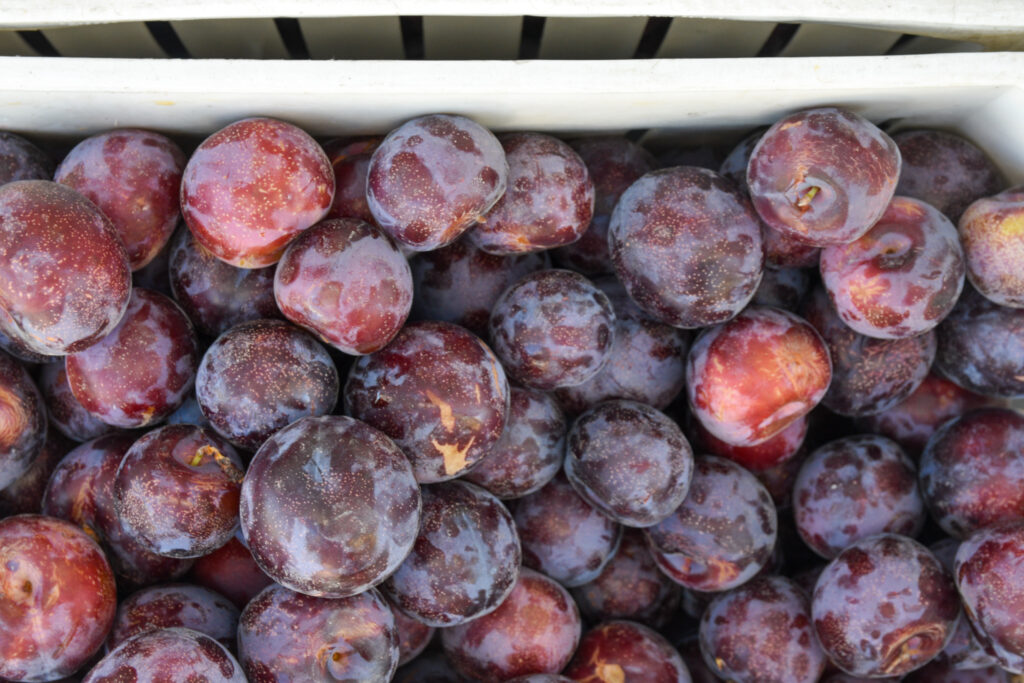
The plumcot is one of the original plum-apricot hybrids cultivated by horticulturist Luther Burbank (also known for developing the Santa Rosa plum). Its makeup is 50/50 plum and apricot, generally taking on the appearance of a plum. Try plumcots between May and September.
Recipe to try: Ceviche with Plums and Ginger by Sara Deseran, Tacolicious
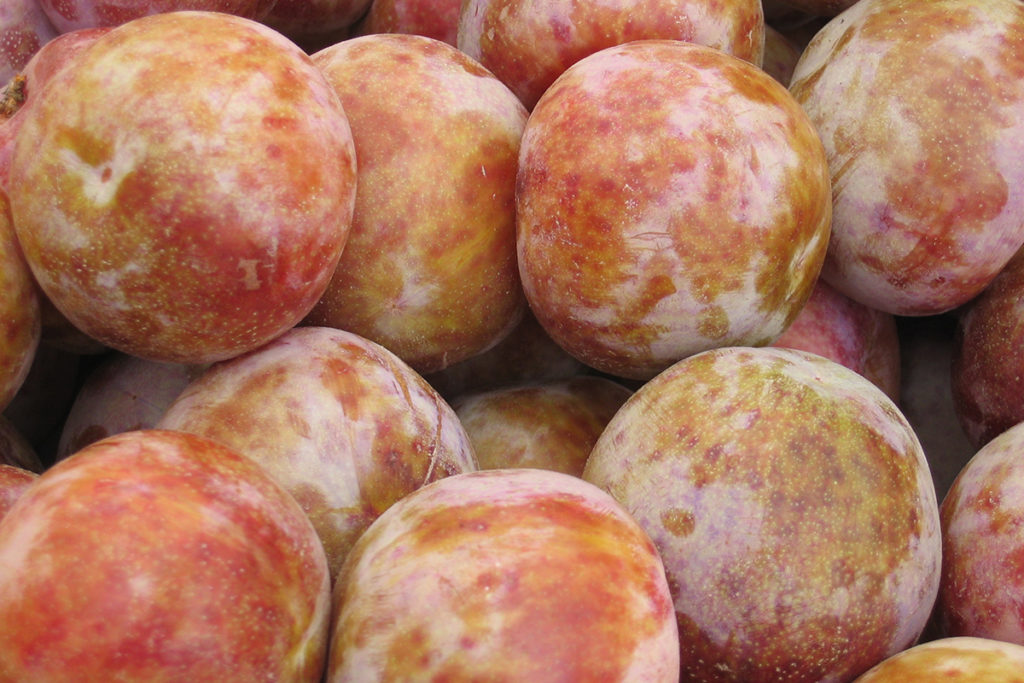
The pluot is a hybrid fruit made from a plum and an apricot, with the genetics leaning about three-quarters on the plum side. The fruit was created in the late 20th century by Floyd Zaiger by crossing multiple generations of plum-apricot hybrids. The skin of the fruit resembles that of a plum, and the flesh is juicy and sweet due to its high sugar content. Zaiger has trademarked over 30 pluot varietals, including the popular Flavor King and Dapple Dandy pluots. Stock up on pluots at K&J Orchards between May and September.
Recipe to try: Sweet Corn Custard and Pluot Pie by Ranyee Chiang, Pie Contest Winner
Peacotums, nectaplums, peacherines … the list goes on. Read more about the delicious world of hybrid stone fruit.
This article has been updated from a previous version.
Topics: Culinary, Farmers market, Fruit, Produce guides
